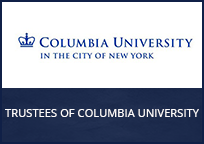Experimentally-Driven Mapping of QoS-to-QoE for Mission-Critical Voice

Trustees of Columbia University
Columbia is building a testbed and measurement platform and are designing a set of human factors experiments reflecting public safety tasks to evaluate the impact of LMR voice quality impairments, such as PTT delay and voice codecs, on speech intelligibility and task performance. This research will provide a quantitative assessment of the impact of key LMR voice quality-of-experience (QoE) and quality-of-service (QoS) parameters on first responder task performance for both current and future public safety voice systems. -July 2019
Quick Resources
Meet the Team
Henning Sculzrinne, Columbia University
Project Overview
The challenges inherent in this task are considerable. A high level of standardization in a laboratory setting provides the experimental control needed to measure how quality of service impairments potentially interact to impact quality of experience. However, such a high level of laboratory control lacks the realism and face validity of radio use during real emergencies. This proposal directly addresses the trade-offs between experimental control and realism by seeking to develop a series of experiments that move from a highly controlled laboratory setting to increasingly realistic scenarios and simulators, using a flexible, scriptable, and adaptable test bed. This approach should enable us to carefully examine and control these tradeoffs. The research team will work cooperatively with NIST’s Public Safety Communications Research Division in developing increasingly realistic simulations while minimizing the error variance that might be introduced in our attempts to experimentally characterize the relationships between QoS and QoE.
Potential Impact of the Project:
Two-way push-to-talk radios are the backbone of currently deployed public safety communications. But before more advanced and costly technologies are deployed, it is essential to understand how the inherent quality of service (QoS) impairments of current radio technologies affects the Quality of Experience (QoE) for public safety responders. This project addresses that need by seeking to systematically characterize and quantify how the inherent impairments of current voice radio technology affects the subjective experiences and performance of first responders. This project addresses that need by seeking to systematically characterize and quantify how the inherent impairments of current voice radio technology affects the subjective experiences and performance of first responders.

